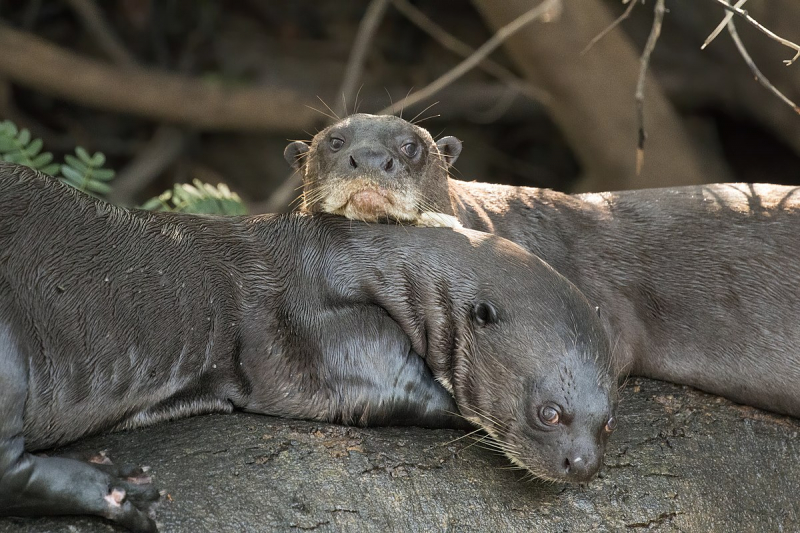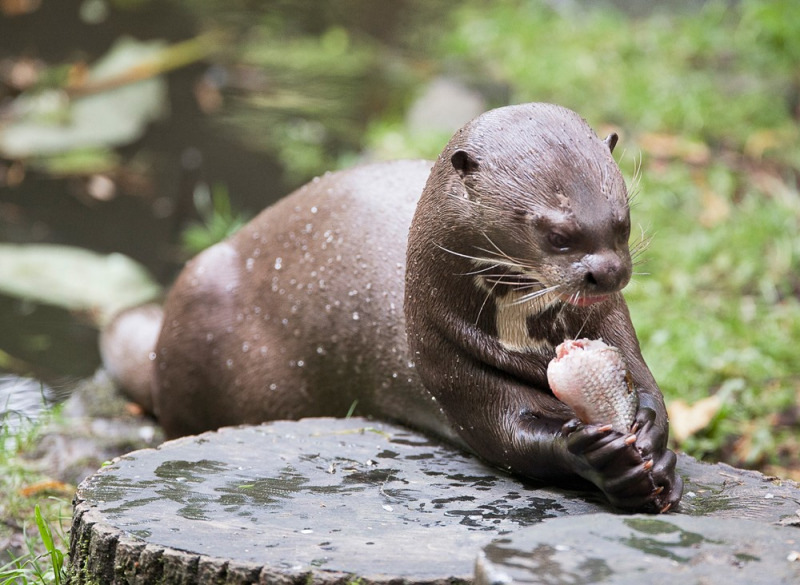Giant Otters
Chances are, when you stroll through social media platforms, a video with otters, undoubtedly, take a place on your timeline. Not only do animal lovers but also others adore this animal, even, in some parts of this world, they are adopted as pets. You can see the appeal because they resemble aquatic cats with hands. Imagine one that is six feet long and capable of combating a caiman, a reptile related to crocodiles and alligators.
You're not entirely correct if you think that sounds archaic. Right present, there are giant otters throughout the world. Despite being endangered, you might be able to find them in Brazil's numerous river systems, such as the Amazon or La Plata. They are the only species that can weigh up to 75 pounds per individual.
The gigantic otter exhibits a number of adaptations that are appropriate for an amphibious existence, including as very thick fur, a tail that resembles wings, and webbed feet. The species may also adapt to freshwater lakes and springs, but favors seasonal flooding in freshwater rivers and streams. It clears a lot of vegetation and builds huge campsites close to feeding places.
The huge otter eats mainly fish, especially charachins and catfish, but it also occasionally consumes crabs, turtles, snakes, and small caimans. Although it must compete with other predators for food supplies, including neotropical otter, jaguar, and several crocodilian species, it has no significant natural predators besides humans.












